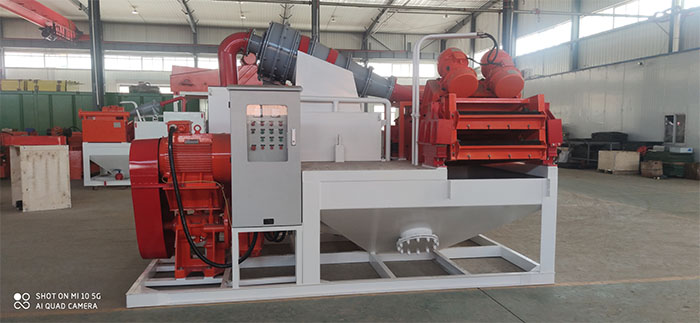Three Requirements and Measurement Methods of Pipe Jacking Mud
- 2021-10-29 15:05
- Brightway Admin
-
Pipe jacking mud is produced during pipe jacking construction, and its main component is mud and water. Understanding the three major indicators of pipe jacking mud has a great effect on the use and treatment of mud during construction. So what are the three major indicators of pipe jacking mud? The three major indicators refer to specific gravity, sand content, and viscosity.
1. The specific gravity of mud is also the density of mud, which is generally expressed in terms of relative density: relative to the density of water, the density of water is 1.0g/cm3, which is measured by a special mud densitometer.
2. The mud sand content refers to the amount of solid particles in the mud, which is determined by the change in the volume of the mud after being filtered by a screen, expressed as a percentage.
3. The viscosity of mud is the main indicator of mud rheology. The proportional constant between the tangential force (shear stress) acting on a unit area of a fluid and the resulting deformation (flow velocity gradient or shear rate) is called dynamic viscosity or effective viscosity.
To understand the three major indicators of mud specific gravity, sand content, and viscosity, let’s take a look at the determination of mud indicators. How are mud indicators determined?

1. Test method of specific gravity of pipe jacking mud
The specific gravity of mud is often measured with a mud hydrometer. The mud hydrometer is composed of mud cup and weighing rod. When measuring, fill the mud cup with mud, cover it and wipe off the mud overflowing from the small mouth. Then place it on the support, move the running code so that the lever is in a horizontal state, and read the scale shown on the left side of the running code, which is the specific gravity of the mud. The instrument should be calibrated with clean water before use. If the reading is not at 1.0, it can be adjusted by increasing or decreasing the metal particles at the right end of the lever.
2. Test method for sand content of pipe jacking mud
Sand content is usually measured with a sand content meter. During the measurement, put 100ml of mud into a measuring cup, dilute the mud with clean water, pour it into the filter cylinder screen to filter, and rinse with water, and finally pour the remaining sand into a clean sand-containing measuring cup and let it stand vertically for one minute, Record the volume of the sediment in milliliters, which is the sand content of the mud
3. Viscosity test method of pipe jacking
A funnel viscometer is often used on the construction site to measure the viscosity of the mud. When measuring, use your fingers to block the outlet under the funnel, and pour 500ml and 200ml of mud from the measuring cup into the funnel through the strainer, and then open the outlet to let the mud flow out of a tube with an inner diameter of 5mm and a length of 100mm. The viscometer measures the relative viscosity of the mud to water. Therefore, water should be used for correction before use. The method is to inject 700ml of clean water into the funnel first, and the standard time to flow out 500ml should be 15s. If there is an error, it can be corrected by the following formula: Mud viscosity = measured mud viscosity (s) × 15s/measured clear water viscosity number (s).
The above are the three major index requirements and measurement methods of pipe jacking construction mud. In the actual construction of the pipe jacking, the working conditions are different and the indicators are different. Each project has its own mud index parameters. According to the indicators, the specific gravity and sand content and viscosity of the mud are controlled, so as to better improve the mud performance and successfully complete the mud.
